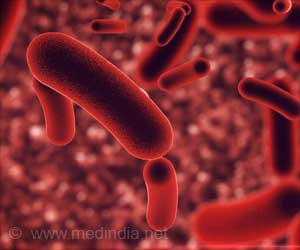A novel mechanism of how sleepy bacteria wake up has been identified. The sleepy cells are responsible for the stubbornness of chronic infections.

‘The sleeping bacteria are called persisters and they can be found in every type of bacterial population studied so far, including important human pathogens.’





Bacteria are able to fall into a deep sleep. From a patient's point of view, persisters are unwanted as their sleeping state makes them insensitive to antibiotics. These sleeping bacteria may wake up spontaneously and colonize the host leading to a return of the infection. Hence, persisters are associated with the failure of antibiotic therapy when they are not killed by the immune system. Until now, it was unknown how these cells were able to revert from dormant to active state. These new results provide insight into how persisters wake up.
Breaking links to wake up
To investigate how persisters wake up, the scientists used an E. coli model system based on HokB. HokB is a peptide - a small cousin of proteins - which is known to promote the development of persister cells by forming pores in the bacterial cell membrane. This results into a rapid loss of energy, pushing the bacteria into a low energy state or deep sleep. Importantly, this pore formation is only possible when two HokB peptides are linked together. The awakening of these sleeping bacteria is possible only when the link between the peptides is broken. This in turn breaks up the pore. Only when the pore is degraded, cells are able to energize again by consuming available nutrients.
Lead author Dorien Wilmaerts (VIB-KU Leuven Center for Microbiology) says: "You can compare this process with a punctured tire: you take out the spike first, and then inflate it again. Doing it the other way around does not make sense."
Advertisement
Persister cells are responsible for chronic infections that keep returning. Examples are urinary tract infections by Escherichia coli, lung infections in cystic fibrosis patients by Pseudomonas aeruginosa, or tuberculosis by Mycobacterium tuberculosis. How persister cells wake up is a long-standing question in persistence research. This work is the first to provide a detailed mechanistic understanding of an awakening mechanism and opens up new perspectives on how to stimulate awakening of deeply dormant cells.
Advertisement
Source-Eurekalert












